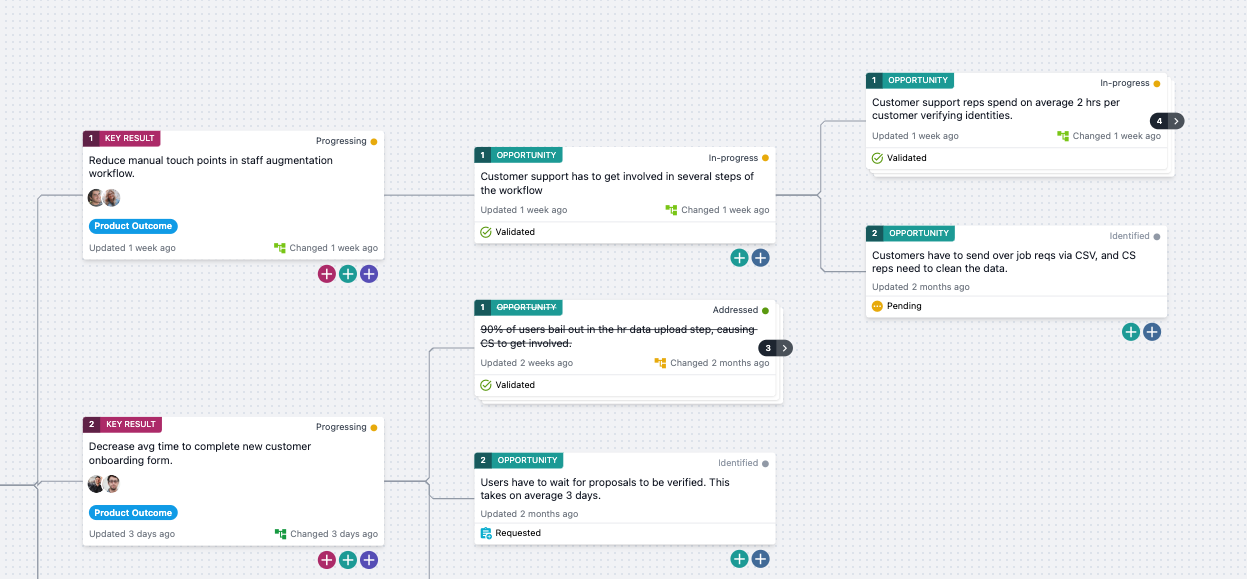Are you setting up a customer discovery process or looking for ways to make improvements?
Here are 10 tips for getting the most out of the process and the interviews.
1) Define the research questions ahead of time.
These are the questions you need answers to. They will help you make better decisions for your product and de-risk any risky assumptions.
2) Avoid asking research questions during the interview.
Instead, turn them into interview questions to help prevent leading users and walking yourself into common bias traps.
Try turning your research question into an interview question by phrasing them in a way that forces users to describe their past experiences.
- "When was the last time..."
- "Tell me about how you..."
Here's an example:
-
Research Question: Will users track their fitness goals in our application?
-
Interview Question (Bad): If we added a goal-tracking feature to the app, would you use it?
-
Interview Question (Good): When was the last time you wrote down your fitness goals and progress?
3) Keep the conversation going!
Don't just ask your interview question and move on. Instead, keep the conversation going and dig into the pain points to learn more.
4) Avoid surface-level learning.
Spending more time going deeper on fewer topics is better than covering too many issues in one session. For one, people are busy and don't want to spend a ton of time in an interview. Secondly, if answers to individual questions are all you're after, there's probably an asynchronous method for collecting that information, and it will most likely save you time and money.
The point of an in-person interview is to see where the conversation goes. You cannot anticipate everything a user will say, and digging deeper will often open unexpected doors and provide unique insights.
5) Keep it casual.
No one likes being interviewed, but they typically don't mind having a conversation. Usually, an interview will feel more formal if you ask research questions. So take the time to think through how you can turn them into interview-style ones.
6) Document the insights (Systems).
Here is some of the basic information your future self will thank you for:
- User name (In B2B, include the name of the company)
- When did you speak to them?
- What were you trying to learn?
- What insights did you uncover? (What were their pain points or desires?)
7) Organize insights (Synthesis).
Group insights into themes. One of the best ways I've found to do this is using Opportunity Solution Trees. They take everything you're learning and organize that information so you can act on it (or ignore it for the time being without losing context).
If you want a system to organize this information efficiently, check out Vistaly.

8) Interview automation.
Allow users to come to you by providing them with a way to schedule on your calendar. One way to do this is to embed a calendar link directly in your application for users to opt-in. You may need to conditionally hide it when you've scheduled the max number of calls you're willing to take.
9) Keep it continuous.
There is always more to learn. So keep the conversations going and a part of your routine. Batching interviews can feel like a time optimization, but look at it like software; massive releases contain more risk than smaller updates. I'd take multiple minor and regular updates over one big release any day.
10) Practice.
None of this comes easy; I've made many mistakes and still do, but you'll get better with each interview.
Want to learn more?
These are great books that will help you hone this skill:
- The Mom Test: Rob Rob Fitzpatrick
- Continuous Discovery Habits: Teresa Torres
Consider subscribing to the Vistaly newsletter.